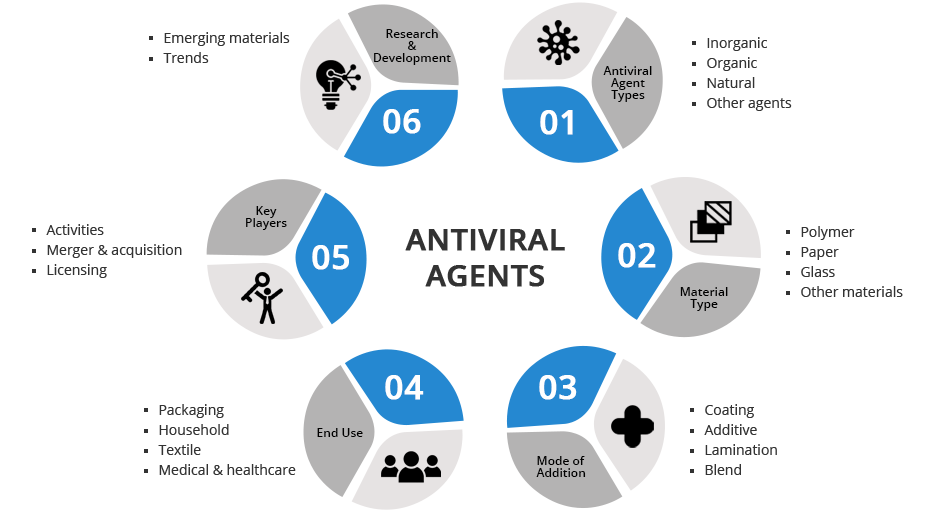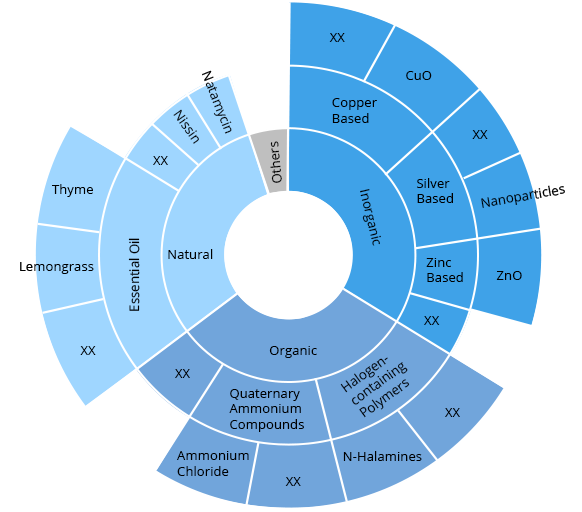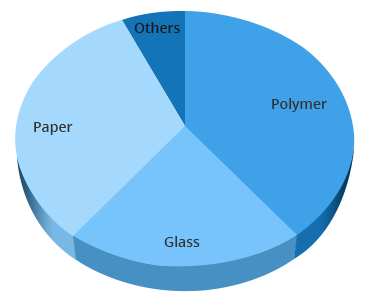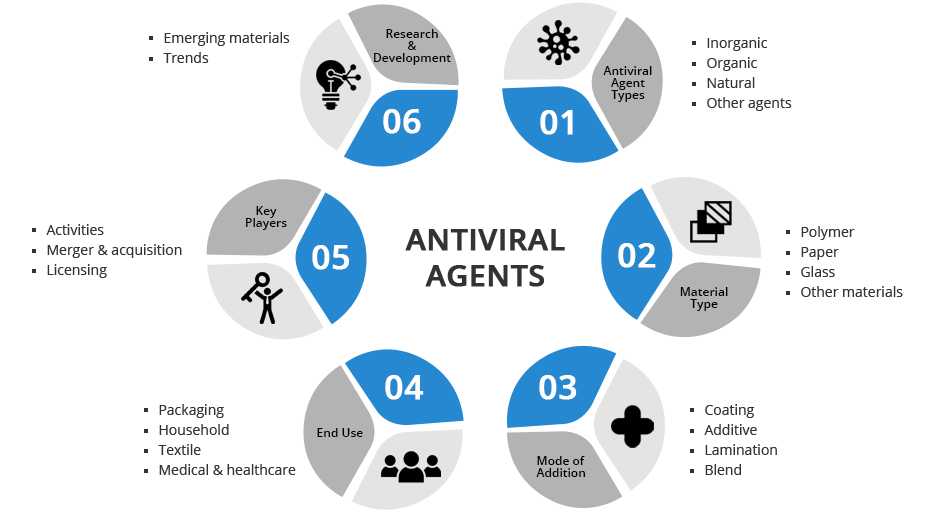Antiviral Agents For Surface Treatment
This report studies the antiviral agents to provide the antiviral activities to the surface of the material. This report is categorized based on antiviral agents, material surface, mode of incorporation, and applications.

In the past few years, deaths due to viral infections such as Norovirus, avian influenza, Middle East Respiratory Syndrome (MERS), and SARS (Severe Acute Respiratory Syndrome) have been reported. The presently evolved problem of COVID-19, a “pandemic” crisis that spreads around the world due to traffic development and virus mutation, has unveiled a new and, at the same time, a very crucial avenue for companies in the antiviral’s utilization in day-to-day products scenario. It is also anticipated to provide antiviral performance to various products as well as general public facilities.

This report covers the antiviral materials based on the types of antiviral agents include inorganic (copper, zinc, and silver), organic (Quaternary Ammonium Compounds (QUATs). halogen-containing polymers: e.g., N-halamines), natural (obtained from plants, animals, and microbes), and other types of agents. The report reflects antiviral agents’ use with a wide variety of materials such as glass, polymer, paper, and other materials upon which antiviral agents can be applied/incorporated by modes such as blend, lamination, coating, additive, and different application modes.

This report also categorized the material based on the packaging industry’s application areas, medical & healthcare industry, textile industry, and household goods. The key players involved in antiviral agents are Biocera, Tosaf, Bactiblock, Kleenex, Chemviron, Romcolor, Porex technology. This report also discusses the emerging antiviral agents, commercial available antiviral agents, R&D activities, recent activities related to the merger, acquisition, collaboration, and licensing.

